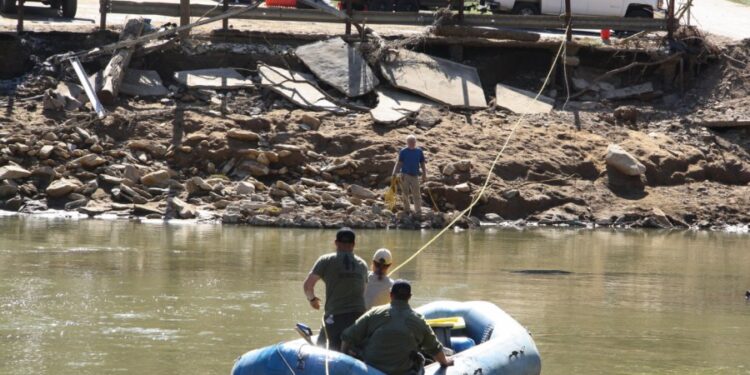
The devastation caused by Hurricanes Helene and Milton was catastrophic and difficult for Americans to comprehend. In North Carolina, parts of Asheville resembled destroyed European cities at the end of World War II. The destruction of what had been shopping centers, homes and basic social infrastructure was mind-numbing.
Although Milton was not as explosive as feared and the number of deaths was fortuitously limited, it showed the danger of underestimating the power of nature
Yet here is a chastening thought experiment. Suppose a relatively small nuclear weapon had exploded over central Florida. It would have made the damage of the two hurricanes, especially regarding loss of life, relatively mild.
This comparison is important. With events in the Middle East threatening to escalate to a regional war, the question of what to do about Iran’s nuclear infrastructure is a non-trivial matter.
As Israel considers how it will retaliate for Iran’s missile strike (which killed one Palestinian), targeting Tehran’s nuclear facilities is one option. President Biden has strongly recommended that Israel not choose this option.
With the damage wrought by these two hurricanes very much in mind, appreciating the power of fission (nuclear) and fusion (thermonuclear weapons) is important given Iran’s activities and China’s increasing nuclear weaponry.
North Korea also cannot be ignored as Kim Jong Un reminds us of his capability along with the means to deliver nuclear weapons with his ballistic missiles. And nuclear terrorism cannot be discounted.
The force of these weapons is incomprehensible. A thermonuclear weapon’s power is measured in millions of tons of TNT, or megatons. A nuclear weapon is measured in kilotons, or thousands of tons of TNT.
A one megaton weapon delivered on top of the White House would leave a crater between a mile and a half mile wide. The force of the explosion would level Washington for miles. And, as in Hiroshima and Nagasaki, burn and radiation deaths would number in the tens of thousands.
Today, the U.S., the United Kingdom, France, Russia, China, North Korea, India and Pakistan possess deliverable nuclear weapons. Israel likely has nuclear weapons. Iran is close.
In the Cold War, when the U.S. and former Soviet Union were the two nuclear superpowers, a concept of deterrence could be established. The threat of nuclear annihilation prevented a nuclear third world war. But today, things are far more complicated, especially when the potential danger of third parties obtaining nuclear weapons cannot be eliminated.
Targeting Iran’s nuclear infrastructure raises profoundly difficult issues and consequences. First, these facilities are vast; buried deeply underground and at Fordow on the side of a mountain. A kinetic conventional attack, as noted by the former commander of United States Central Command, Gen. Kenneth “Frank” McKenzie, is unlikely to succeed.
Even the use of nuclear weapons might not completely wipe out all these complexes and the consequences are impossible to predict. And it would take an invasion to occupy and destroy all the installations on the ground.
Second, if a strike were to fail, would it force Iran to develop a nuclear weapon? And would an attack provoke a nuclear disaster such as Chernobyl if reactors exploded or radioactive materials were released? These are not trivial questions.
Regarding hurricane response, no matter how well or poorly handled, extensive planning and preparations have been undertaken over considerable periods of time. But no analogy exists today about the dangers of nuclear war and nuclear weapons use.
Yes, the U.S., former Soviet Union and Russia practiced arms control and limitations agreements. However, most, including the Anti-Ballistic Missile, Intermediate Nuclear Forces, Open Skies and Strategic Arms Limitations treaties and agreements have been abrogated or disestablished, and new mechanisms have not been put in place.
China refuses to agree to nuclear arms talks. Israel does not acknowledge it possesses nuclear weapons. And India and Pakistan view their weapons as direct deterrents to the other.
Common sense would dictate that the next administration would try to develop some mechanisms to address these nuclear issues that pose life and societal-threatening conditions.
In this context, what damage Helene and Milton inflicted would be trivial in comparison, especially when human life is considered along with the dangers of radiation. Plutonium has a 24,000-year half-life.
Harlan Ullman Ph.D., is a senior advisor at the Atlantic Council and the prime author of the “shock and awe” military doctrine. His 12th book, “The Fifth Horseman and the New MAD: How Massive Attacks of Disruption Became the Looming Existential Danger to a Divided Nation and the World at Large,” is available on Amazon.







